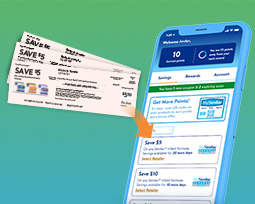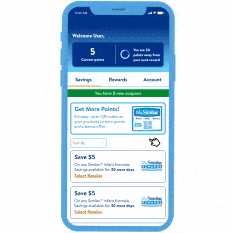At this stage, a toddler has become a part of the grown-up’s table and is eating a broader range of table foods. Ideally, the bright yellows, reds, oranges, and greens of healthy fruits and vegetables are becoming their favorite mealtime colors...if only the appetite of a 2-year-old was so predictable, right?
In the real world, your toddler’s appetite could change by the day, and not always for the better. Like you, they may want to eat the same foods over and over again. That’s normal!
What’s important is that you support healthy eating habits by providing them the wide variety of foods they need for brain and eye development and immune support. If this seems easier said than done, here are some tips to try:
- Stick with a feeding schedule of 3 meals per day, along with snacks. Resist the temptation to negotiate eating or force-feeding. If your toddler refuses food at one meal, they will probably make up for it at the next.
- Keep your toddler’s food portion sizes at about ¼ of an adult serving.
- Offer them foods in a variety of colors, textures, and flavors. Toddlers need a range of colorful foods from all food groups to meet their nutrition needs.
Here’s an example menu for a 2-year-old who weighs approximately 27 pounds:
- Breakfast: ½ cup nonfat or low-fat milk, 1 slice of whole-grain toast or ½ cup iron-fortified cereal, 1 egg, ⅓ cup fruit (for example, cut-up strawberries)
- Snack: 4 crackers with cheese or hummus or ½ cup cut-up fruit or berries, ½ cup water
- Lunch: ½ cup low-fat or nonfat milk, ½ sandwich—1 slice whole whole-grain bread, 1 ounce meat, slice of cheese, veggie (avocado, lettuce, or tomato), 2-3 carrot sticks (cut up) or 2 tablespoons other dark- yellow or dark-green vegetable, ½ cup berries
- Snack: ½ cup nonfat or low-fat milk, ½ sliced apple thinly spread with 1 tbsp nut butter, 3 prunes, ⅓ cup grapes (cut up), or ½ orange
- Dinner: ½ cup nonfat or low-fat milk, 2 ounces fish, ⅓ cup pasta, rice, or potato, ⅓ cup vegetable
If your child struggles to eat a variety of fruits and vegetables, Go & Grow 360 Total Care® by Similac® can help supply key nutrients to support their development and balance their diet. It has many of the nutrients supplied by whole vegetables and fruits.
Get more information or purchase Go & Grow 360 Total Care® by Similac® Toddler Drink.
* 1 serving is defined as 15 g powder reconstituted in 4 fl oz of water.
† Daily Value for 1- to 3-year-olds.







